….Fish & Chips (with mushy peas).
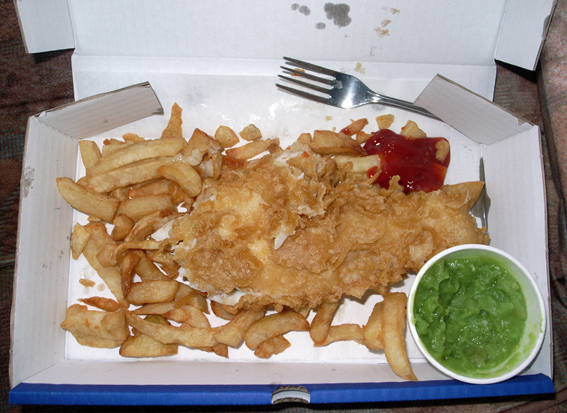
We’ve been on the road for most of the day having traversed through the Peak District heading north to Richmond (on the edge of the Yorkshire Dales). We decided to pull over in Ripon for an early tea and given it’s Friday night, what better than a serving of fish and chips with a side order of mushy peas. Our chosen chippy, the curiously named ‘Whitby Harbour’ (we’re at least fifty miles inland from Whitby), didn’t disappoint.
Fish and chips has been the nation’s favoured takeaway dish since the late Victorian era and has only lately been challenged for supremacy by Indian food. For the gourmets among you, why not read this short history of this humble dish.
Â
Posted in MISCELLANEOUS | Comments Off on IN PRAISE OF….
I was at Edgbaston cricket ground in Birmingham this past weekend to photograph the third test between England and South Africa (which we lost). I wasn’t so interested in the cricket as the crowds watching. It was a carnival atmosphere in the summer sunshine with nearly half the spectators (mostly middle class, white men) clad in a plethora of bizarre fancy dress outfits. Costumes ranged from cowboys, strippers and zorro to superheroes, cavemen, and my personal favourite, Amy Winehouse.
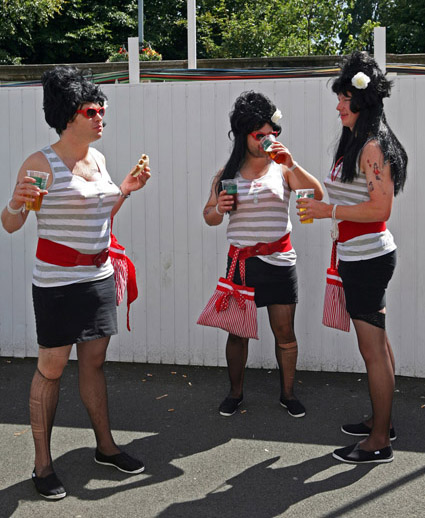
Â
And of course the Barmy Army were in full force.

Â
Posted in EVENTS & PASTIMES | Comments Off on WINEHOUSE AND THE BARMY ARMY
We’ve just had a couple of days relaxing in the Peak District where we were joined by our good friends from Brighton (and fellow photographers), Karoki Lewis and Poppy Berry.Â
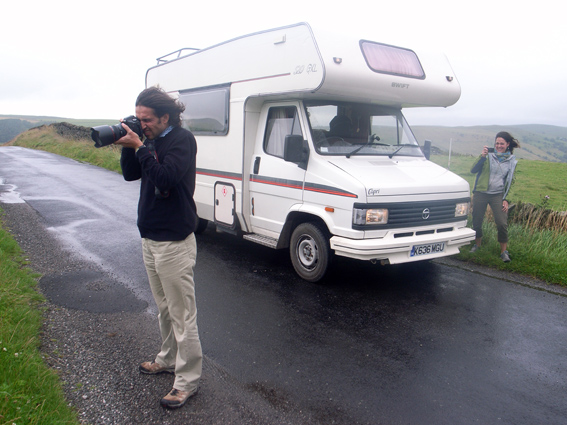
Â
Posted in MISCELLANEOUS | Comments Off on TIME OUT
It’s not often that you come across a landscape, urban or rural, that is virtually unchanged in half a century.
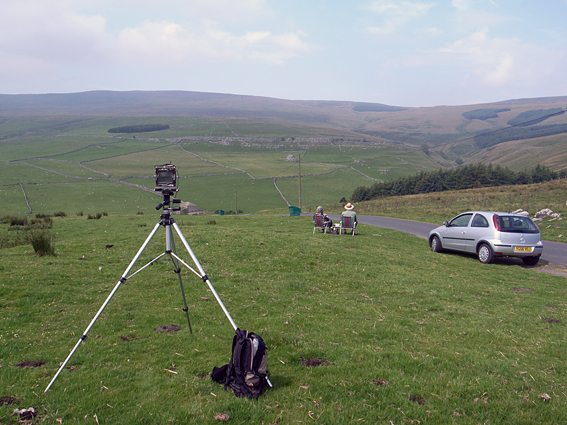
On driving from Malham to Arncliffe, a road which cuts through the picturesque limestone landscape of the South Pennines in the Yorkshire Moors, I came across Les and Doreen Barnett sat on deck chairs looking out over the hills while enjoying a sandwich and flask of tea. Les, who is founder and president of both the Bradford Urban Wildlife Group and Bradford Botany Group, told me that he and Doreen had been coming to admire this view for nearly 50 years. In that time, all that’s changed is a new tractor on the farm and the unwelcome arrival of several roadside salt bins. Traffic is heavier at the weekends, so they only come on a weekday morning.
As W.G.Hoskins writes in his classic text The Making of the English Landscape (1955), “not much of England, even in its more withdrawn, inhuman places, has escaped being altered by man in some subtle way or other, however untouched we fancy it is at first sight.”
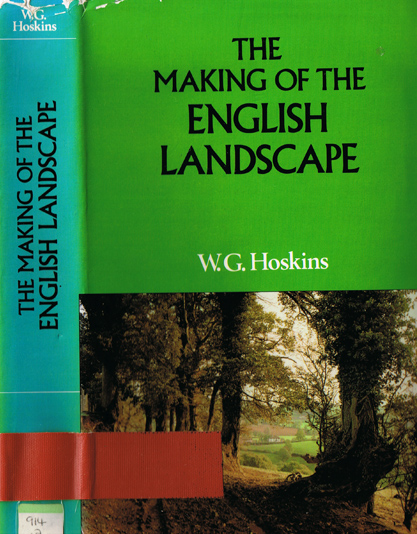
Three influences shape landscape- geology, climate and mankind. The origins of the early industrial revolution are to be found in the South Penines, an area which takes in parts of Bradford, Calderdale, Craven and Kirklees in Yorkshire and Burnley, Oldham, Rochdale and Lancashire County Council. These places bear witness to one of the greatest leap forward man has ever made: the Industrial Revolution. This is a cultural landscape unique in England.
While the 19th Century transformed the region – wool in Yorkshire, cotton in Lancashire, textile wealth that powered the Victorian Age and the British Empire – much of this area is still untouched. The Yorkshire Moors are steeply cut by wooded valleys and a patchwork of hamlets and fields. Acid soils on impervious gritstone rock make the moors a tough but beautiful natural environment. Below the rough grazing of the moor, a distinctive lattice of 18th century drystone walls mark out the ‘in bye’ land: winter pasture for lambing and summer moving meadows for silage and hay.
Posted in LANDSCAPE, PLACES | Comments Off on AN UNALTERED LANDSCAPE
Continuing my weekly dispatch in The Times, week 10 was taken in Gordale, Yorkshire Dales.
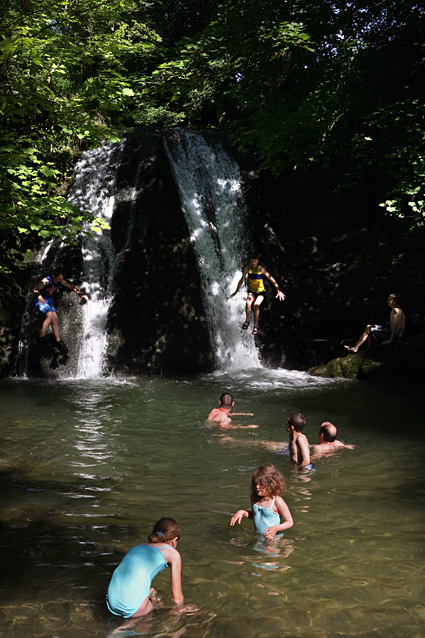
Janet’s Foss, 28th July 2008
Holidaymakers cool down on one of the hottest days of the year in Janet’s Foss, a small waterfall near the village of Malham in the Yorkshire Dales. Foss is a Nordic word for a waterfall and Janet was believed to be the queen of the local fairies who lives behind the fall in a cave.
This week I’m going to be in Staffordshire and Derbyshire.
Â
Posted in POSTCARDS | Comments Off on POSTCARD IN THE TIMES – WEEK 10
Between 1983 and 1986, Martin Parr photographed holidaymakers and day-trippers in the decaying seaside resort of New Brighton on the Wirral (near Liverpool). Using flash and printing in vivid colour, he shed an unforgiving light on his subjects. The project was published by Dewi Lewis and exhibited at the Serpentine Gallery in 1986 as The Last Resort.
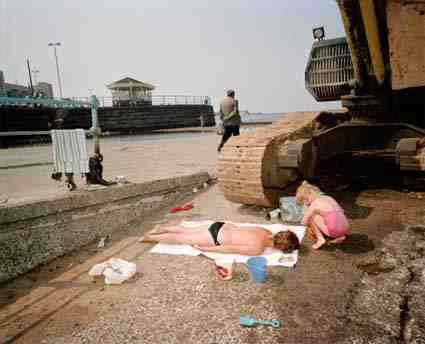
© Martin Parr, The Last Resort
At the time, there was a concerted critical media response to the work with most of the criticism being aimed at the subjects, not the photographs. Since its publication there has been much debate about Parr’s approach to his subject and opinions are very much divided between those who consider his work as cruel and voyeuristic, while others suggest his view is actually affectionate and amusing.
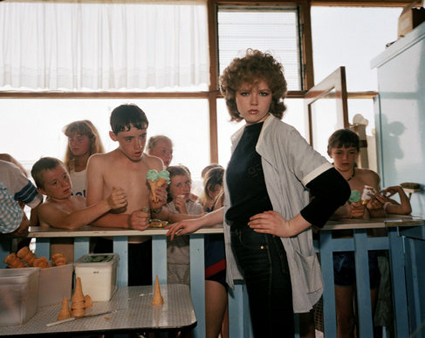
© Martin Parr, The Last Resort
Whatever you think, The Last Resort was a highly original and influential body of work and a wonderful satire on the state of Thatcher’s Britain. It established Parr as one of the world’s most influential and admired photographers, while revolutionising documentary photography in Britain.
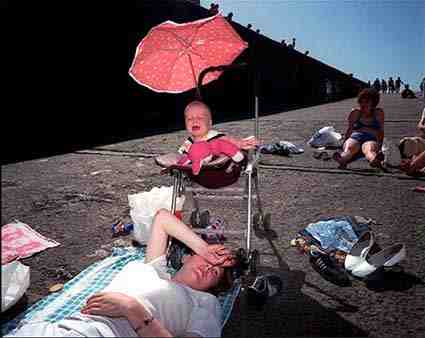
© Martin Parr, The Last Resort
So it was rather surreal arriving in New Brighton on a sunny (and rather blustery) afternoon a couple of weeks ago having all the visual baggage of Martin Parr’s photographs in my head. Of course it was an anti-climax. In the name of progress the area has changed considerably since Parr’s days with much of the Wirral’s northern coastline a sought after area, (we were staying with two university friends, a GP and a trainee Consultant, who recently moved to Hoylake from Liverpool).
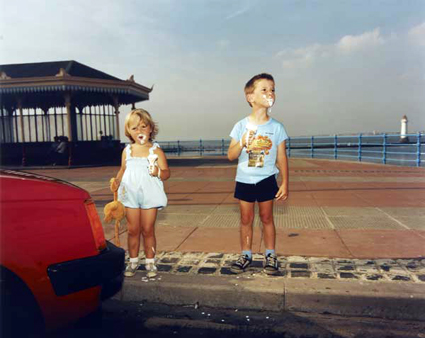
© Martin Parr, The Last Resort
A £70 million redevelopment plan for the regeneration of New Brighton was unveiled in 2004, with the aim of bringing jobs and tourism into the area. Known as the Neptune Project, it involved filling in the Marine Lake to build a supermarket, and constructing a lido resort combining a pool and a new marine lake. However the plans were rejected on account of financial feasibility, and scepticism over the actual worth to the community on the whole. In October 2007, the Government rejected a public enquiry into the plan, and an amended plan was approved, which will include a Morrisons supermarket on the seafront, budget hotel and refurbishment of the Floral Pavilion Theatre.
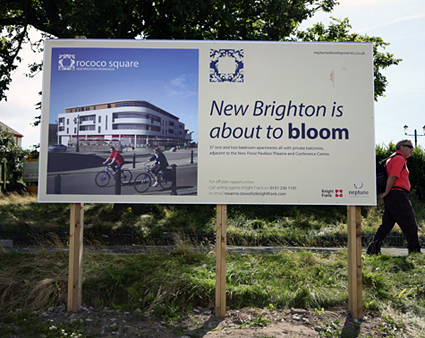
While it’s great that the area has managed to develop and shed its tatty appearance, as is so often the case these days, the re-development is very bland and non-descript. You could be on any promenade in England, there is no individuality just lots of concrete. Although I’m sure New Brightoners are much happier than the resort of Parr’s photographs.
As an aside, there’s an interview with Martin Parr in the current issue of PDN called ‘Why Photojournalism Must Get Modern’. In the interview Parr argues that photojournalism “has to get modern†to regain the attention and support of mainstream magazines. He asserts, “You have to disguise things as entertainment, but still leave a message and some poignancy.”  You can read it  online here.Â
Â
Posted in PLACES, REPRESENTATION | Comments Off on FROM LAST RESORT TO NEW RESORT
It was incredibly sad to hear about the huge fire that destroyed much of the Grand Pier at Weston-Super-Mare last week. Fortunately no-one was injured in the fire, which firefighters said started in an area containing deep fat fryers.Â
Grand Pier in flames
As with many seaside towns, the pier is an icon of Weston’s seafront and a focal point for most tourists visiting the town.
According to Visit Somerset, part of the pier has already re-opened to visitors. As well as enjoying the attractions at the landward end of the pier, visitors can also walk along most of the length of the pier deck and see for themselves the effects of the fire on the pavilion building. Â
And it seems that this won’t be the end of the pier show. Owners Kerry and Michelle Michael, claim in an interview featured in yesterday’s Weston Mercury that they will restore the pier to its former glory.
Â
Posted in PLACES | Comments Off on END OF THE PIER SHOW?













